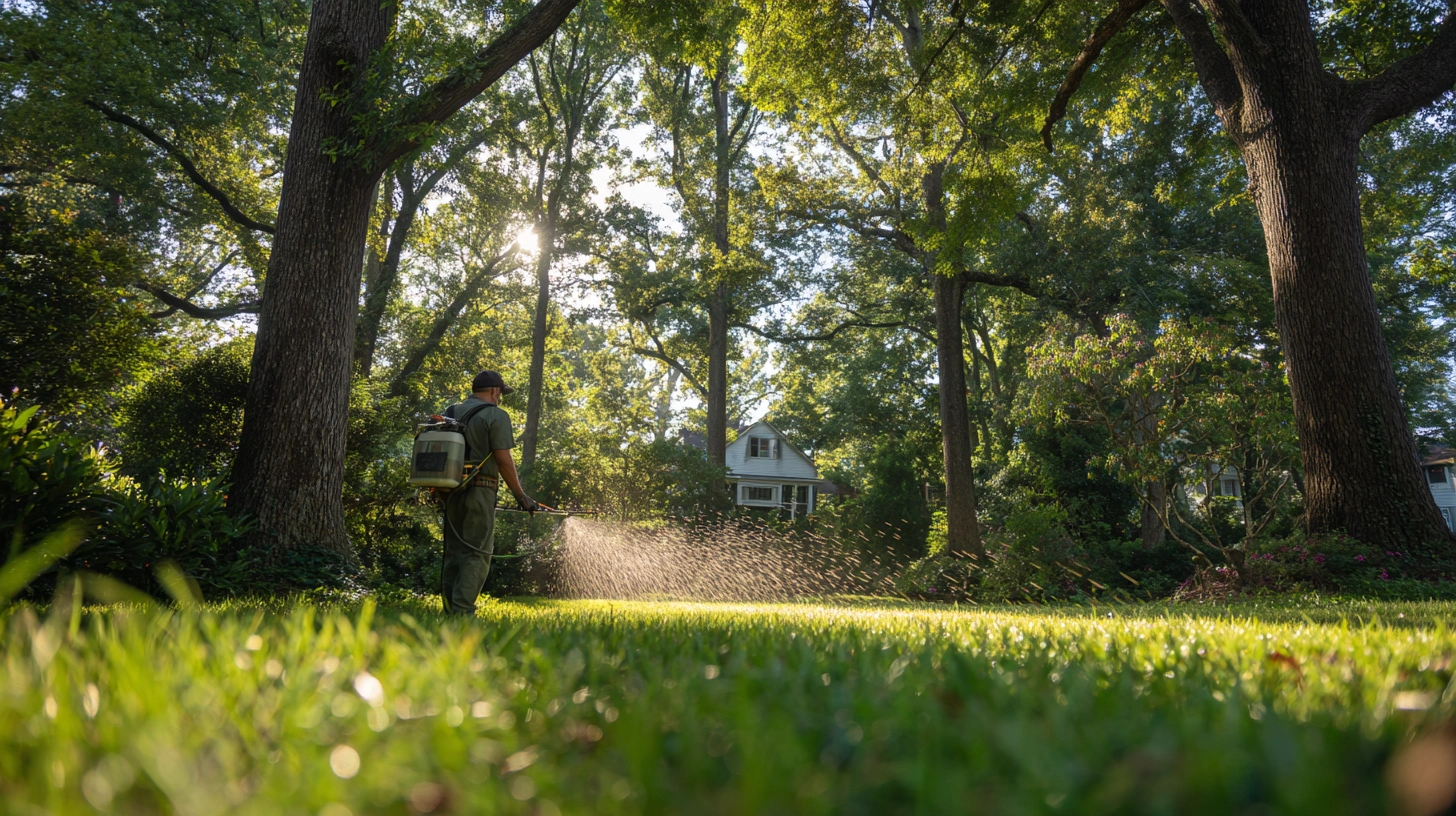Bermudagrass Removal in Northern Virginia Lawns

Discover proven strategies, full renovation or selective management, to reclaim your Northern Virginia lawn from invading Bermudagrass and reseed with tall fescue.
# Bermudagrass Removal in Northern Virginia Lawns
Introduction
Living in Northern Virginia's transitional zone means enjoying a vibrant, green lawn most of the year, but it also puts you on the front lines against creeping Bermudagrass. That tough, warm-season invader can choke out cool-season favorites like tall fescue, leaving brown patches in fall and winter. If you've spotted fine, wiry runners snaking across your yard, you're not alone.
In this guide, you'll learn two proven approaches: the "nuke" method (full renovation) and a selective, ongoing management plan. We'll walk through timing, tools, cultural practices, and safety measures tailored to Northern Virginia's climate and Chesapeake Bay watershed regulations. By the end, you'll know exactly when to spray, how to prep soil, and how to reseed for a thick, healthy tall fescue lawn.
Problem Identification
Spotting Bermudagrass early can save you time and effort down the road. Look for:
- Thin, wiry blades forming mats in summer
- Brown patches in cool months while fescue stays green
- Aggressive runners (stolons and rhizomes) spreading under mowed grass
Once Bermudagrass establishes, it competes fiercely for water, nutrients, and space. A hands-off approach lets it take over.
Causes and Contributing Factors
Northern Virginia's hot, dry summers create perfect conditions for Bermudagrass. Add in:
- Low mowing heights (below 3.5 inches)
- Compacted or nutrient-poor soil
- Thin cool-season turf lacking density
And you've rolled out the welcome mat.
Solution 1: Full Renovation ("Nuking")
Why Choose Full Renovation?
When Bermudagrass covers 30-50% of your lawn, selective methods may feel like a slow two-step forward, one-step back. A full renovation wipes the slate clean, great for heavy infestations.
Step-by-Step Process
- Timing: Late August to early October is your window. Soil temperatures are still warm enough for herbicide uptake and cool enough for tall fescue germination.
- Initial Spray: Apply a non-selective herbicide like glyphosate (Virginia Tech VCE). Treat on a sunny, calm day when Bermudagrass is actively growing.
- Follow-Up Applications: Wait 7-14 days, then re-spray any regrowth. Repeat until new shoots stop appearing (usually 2-3 applications).
- Wait Period: After the final kill, allow 7-10 days for the turf to die back completely.
- Turf Removal and Soil Prep: Remove dead vegetation with a sod cutter or rototiller. Aerate or lightly till the soil, then incorporate organic matter and a starter fertilizer.
- Seeding: Broadcast tall fescue seed at 6-8 lbs per 1,000 sq ft. Gently rake to ensure good seed-to-soil contact.
- Watering: Keep soil consistently moist (about 0.5 inches of water per day) until seedlings reach 1.5 inches tall.
- First Mow and Care: Mow at 3.5-4 inches high. Avoid pre-emergent herbicides until your new lawn has had at least three mowings.
Pros and Cons
- Pros: Most thorough eradication, clean slate for thick fescue, opportunities to correct soil issues.
- Cons: Labor-intensive, higher upfront cost, risk of missing isolated Bermudagrass that can resurge.
Ready to transform your lawn?
Get personalized AI guidance for the perfect lawn. Download Grassmaster Gus now!
Solution 2: Selective Integrated Management
When to Choose Selective Control
For lighter Bermudagrass patches or if you prefer minimizing chemicals, selective control can help maintain a mostly fescue lawn.
Strategies
- Selective Herbicides: Use products containing fenoxaprop-P (e.g., Acclaim Extra). Apply according to label, usually every 2-4 weeks during peak Bermudagrass growth.
- Cultural Practices:
- Raise mower to 3.5-4 inches to shade out Bermudagrass runners.
- Aerate in fall and overseed thin areas with fescue.
- Fertilize with a balanced, slow-release formula in early fall and spring to promote fescue density.
- Spot Treatments: For new patches, spot-spray with glyphosate or a ready-to-use formula. Cover nearby fescue with cardboard or spray shields to protect it.
- Regular Monitoring: Walk your lawn in late spring and summer to catch fresh stolons before they spread.
Pros and Cons
- Pros: Less disruptive, lower cost, preserves existing turf.
- Cons: Ongoing commitment, slower progress, may never fully eliminate heavy infestations.
Prevention Strategies
Once you've got a healthy fescue stand, keep Bermudagrass at bay:
- Maintain mowing height at 3.5-4 inches
- Aerate and overseed every fall
- Use pre-emergent herbicides in early spring (after lawn is established)
- Keep soil fertile--run a soil test every 3 years and amend accordingly
Timing and Application Guidelines
- Herbicide Applications: Late summer when Bermudagrass is actively growing.
- Seeding Window: Late August through early October, soil warm enough for germination, air cool enough to reduce stress.
- Weather Check: Avoid heavy rain forecasts within 48 hours of spraying or seeding. Irrigate lightly if fall turns dry.
Safety and Environmental Considerations
Northern Virginia homeowners should be mindful of the Chesapeake Bay watershed:
- Choose spot treatments over broadcast spraying near waterways.
- Follow label rates exactly, overuse can lead to runoff.
- Wear protective gear: gloves, long sleeves, and eye protection.
- Check Fairfax County guidelines on chemical use near streams and ponds (Fairfax SWCD).
Conclusion
Eradicating Bermudagrass in Northern Virginia takes planning, timing, and a bit of elbow grease. A full renovation gives you the best shot at a uniform tall fescue lawn but requires more work and cost upfront. Selective control can work for lighter infestations, just be prepared for ongoing treatments.
No matter which path you choose, late summer to early fall is your golden window. Follow cultural best practices, respect local environmental guidelines, and stay vigilant. Do that, and you'll be back to a lush, green lawn that withstands Virginia's transitional climate, neighbors included.


